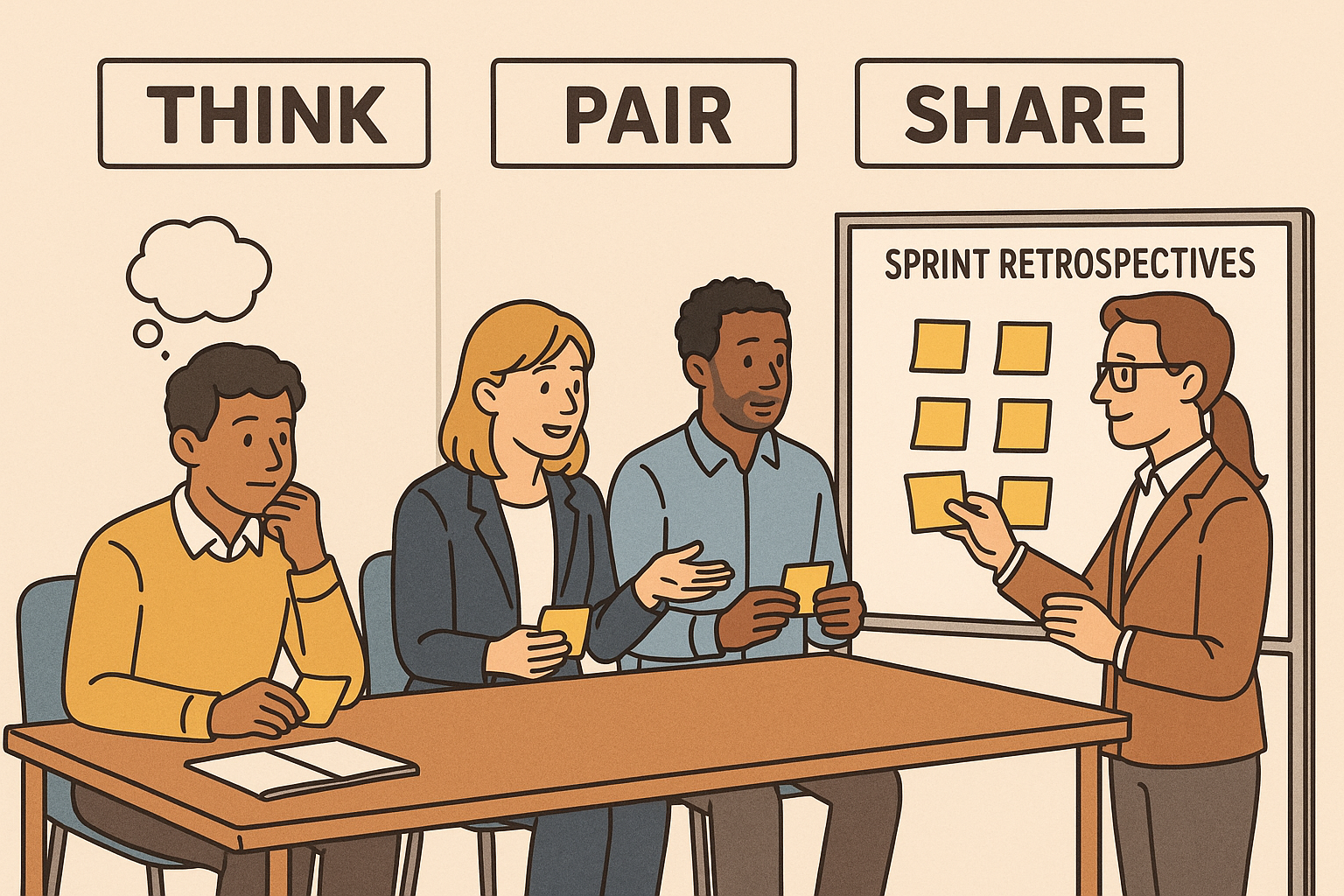Enhancing Scrum Retrospectives with Think-Pair-Share

This thesis explores how the Think-Pair-Share method, originally developed in education, can be applied to Scrum Sprint Retrospectives to enhance participation, focus, and psychological safety.
Topic
Scrum teams often find that Sprint Retrospectives become one-sided, superficial, or unengaging. The Think-Pair-Share (TPS) method is a simple three-step technique from the field of education that may offer a practical way to improve them. It encourages silent individual thinking, paired discussions, and then structured sharing with the whole group. How does the Think-Pair-Share method impact Scrum Sprint retrospectives?
Relevance
Retrospectives are key to continuous improvement, but many teams quietly admit skipping them or leaving without seeing any real change. When psychological safety is low and only a few people speak up, the meeting often lacks value. TPS offers clear time limits and encourages equal participation, without needing extra tools or budget. For teams looking for a simple, repeatable way to improve their retrospectives, TPS provides an easy-to-use method that helps uncover valuable insights and maintain engagement.
Results
Interviews with ten experienced Scrum professionals highlighted three key themes. First, the Think-Pair-Share (TPS) method encouraged broader participation by giving quieter team members more space to share. Second, its clear three-step structure helped keep discussions focused, reducing off-topic talk and early influence from dominant opinions. Third, many teams noticed a clear boost in psychological safety. However, TPS alone wasn't enough in teams with serious interpersonal conflicts, skilled facilitation was still essential.
Implications for practitioners
- The Think-Pair-Share (TPS) method may be particularly useful in contexts where participant engagement declines. Its implementation requires minimal resources, typically limited to sticky notes or a virtual whiteboard.
- Pair rotations should be conducted with intention, balancing quieter and more vocal participants while avoiding configurations that reflect hierarchical reporting structures.
- Using a visible timer during each phase can help sustain attention and encourage timely contributions, without requiring heavy facilitation.
Methods
This study used an exploratory qualitative approach. Ten Scrum practitioners were purposefully selected for their experience with retrospectives. Semi-structured interviews gathered their firsthand experiences using TPS during Sprint retrospectives. The transcripts were analyzed line by line, and themes were developed through an inductive process using constant comparison. Initial codes were grouped into broader themes. This method allowed for depth and flexibility, supporting the discovery of new insights.
